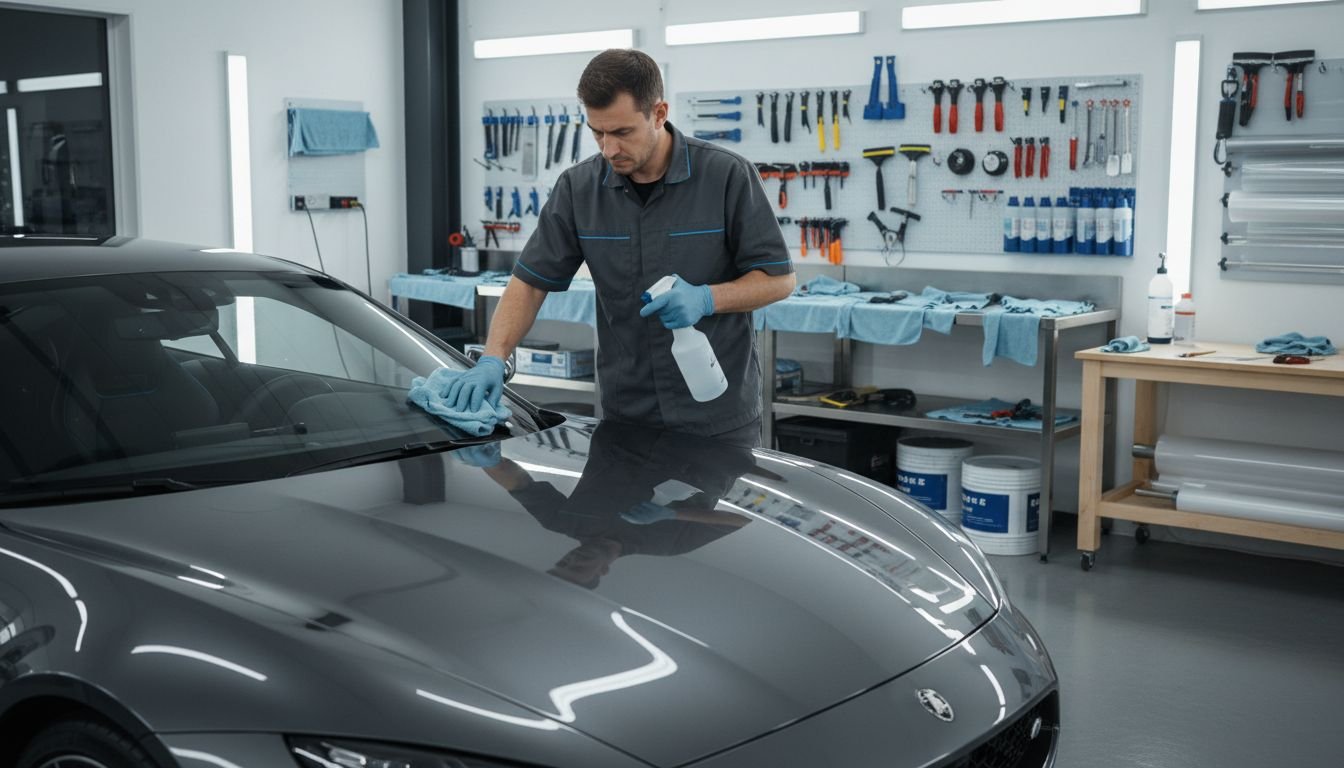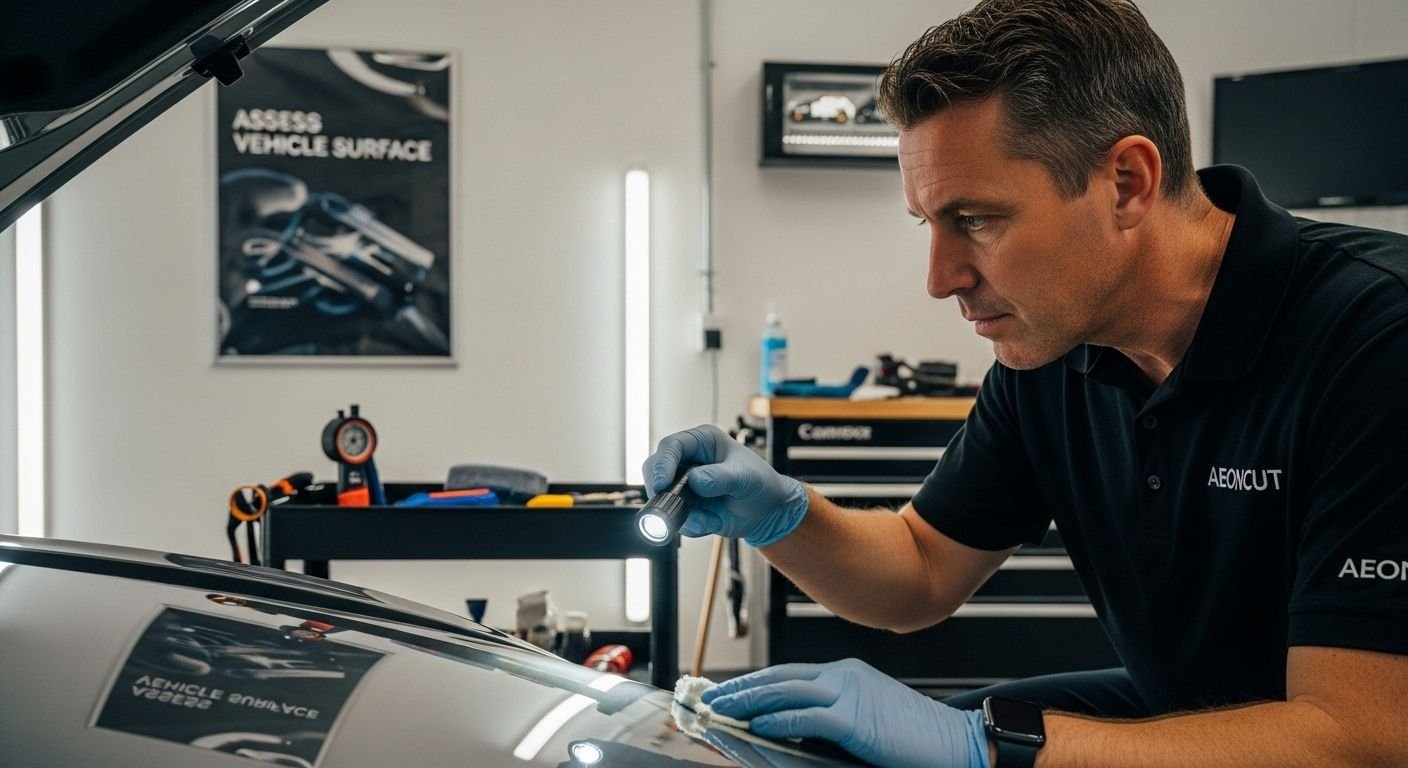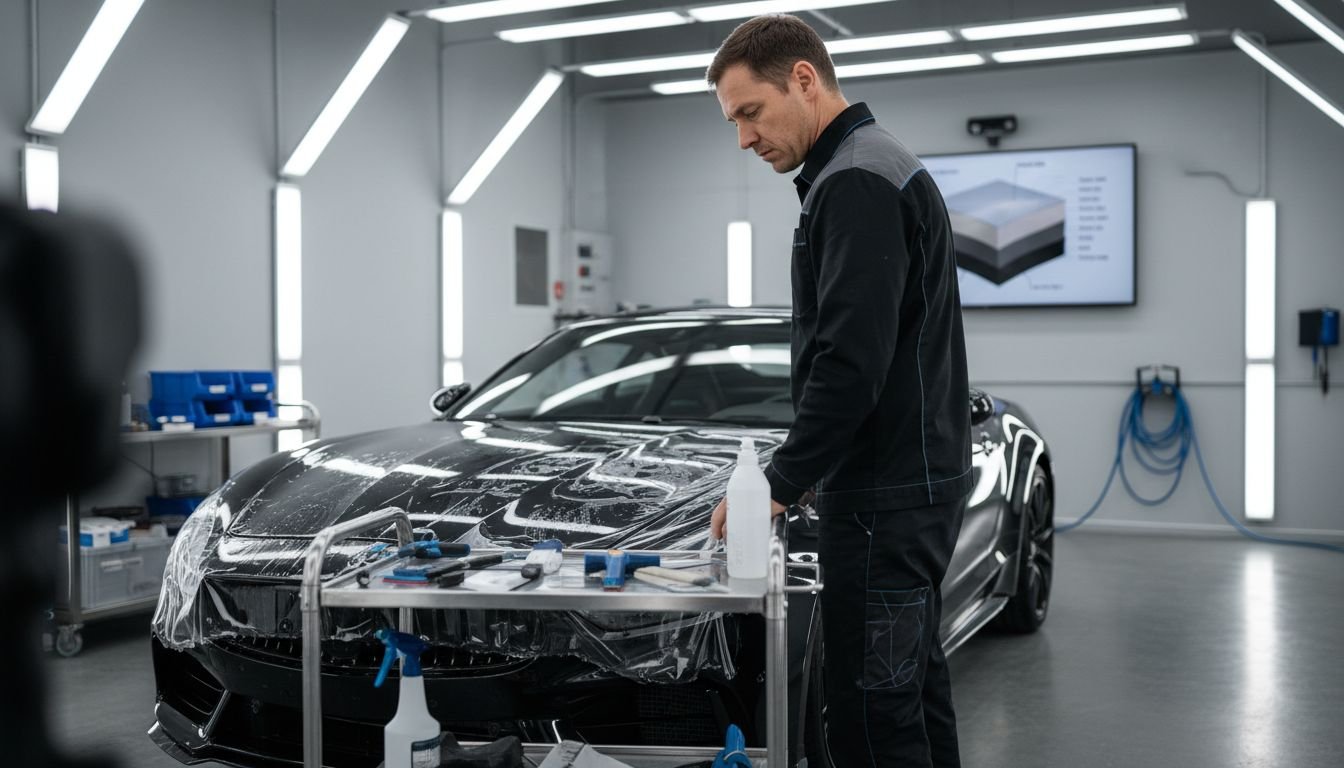
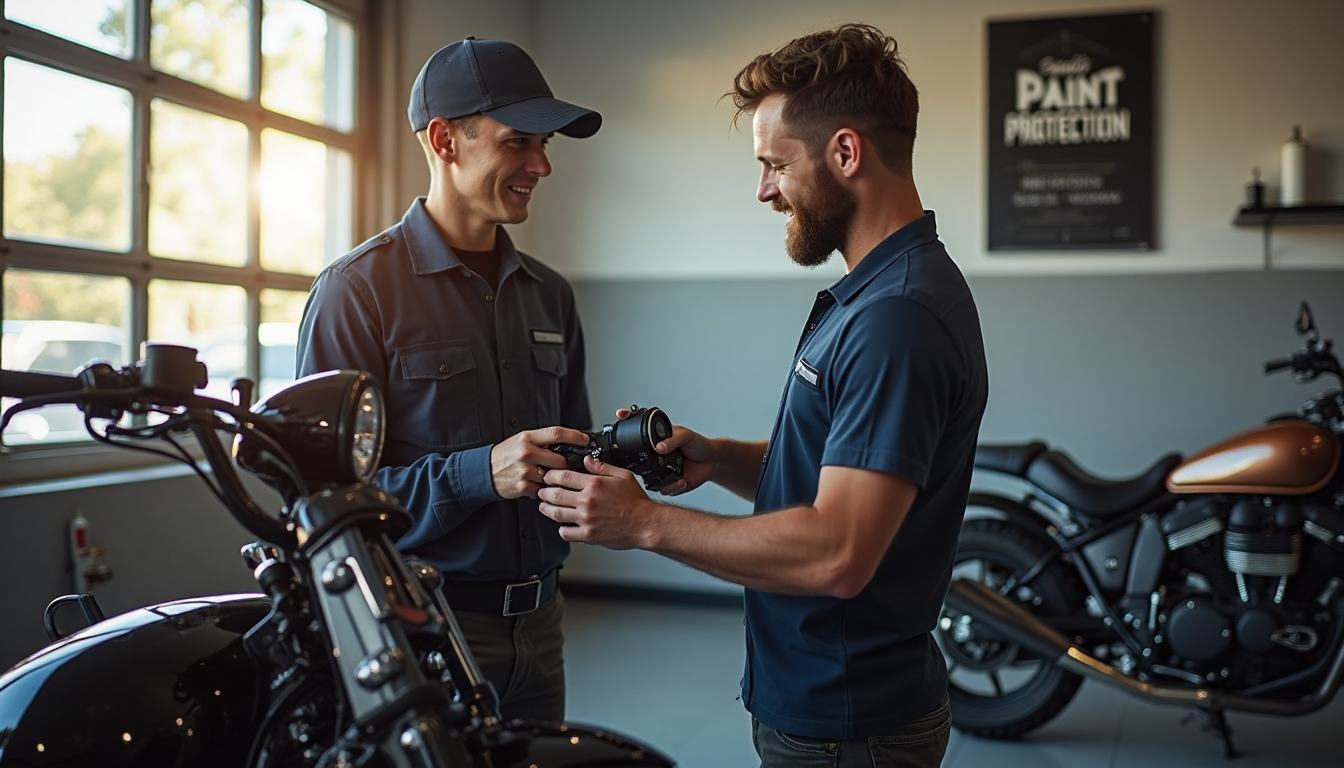
Motorcycle paint protection film, or PPF, has shot up in popularity among installers and detailers who want more than just shiny bikes. Brace yourself for this. High-quality PPF can prevent up to 80 percent of environmental paint degradation, making it far more effective than waxing or ceramic coatings. Yet, the real surprise is not only about lasting looks or self-healing magic but how PPF has turned into a strategic investment that can safeguard a motorcycle’s value for years to come.
Table of Contents
- Benefits Of Ppf For Motorcycle Protection
- Key Features To Look For In Motorcycle Ppf
- Professional Application Tips And Best Practices
- Managing Customer Expectations And Aftercare Advice
Quick Summary
| Takeaway | Explanation |
|---|---|
| Advanced Protection | PPF offers multilayered defence against environmental and physical threats, significantly reducing paint degradation and preserving integrity. |
| Self-Healing Properties | Modern PPF can repair minor scratches with moderate heat, allowing for easier maintenance and a longer lifespan for motorcycle paintwork. |
| Professional Installation is Key | The success of PPF installation hinges on meticulous surface preparation and precision techniques to ensure optimal performance and satisfaction. |
| Educate Customers on Aftercare | Clear communication about initial care post-installation and long-term maintenance is essential for optimal film performance and client trust. |
| Understand Limitations | Whilst PPF provides substantial protection, it is not entirely impervious to damage; managing customer expectations regarding PPF capabilities is crucial. |
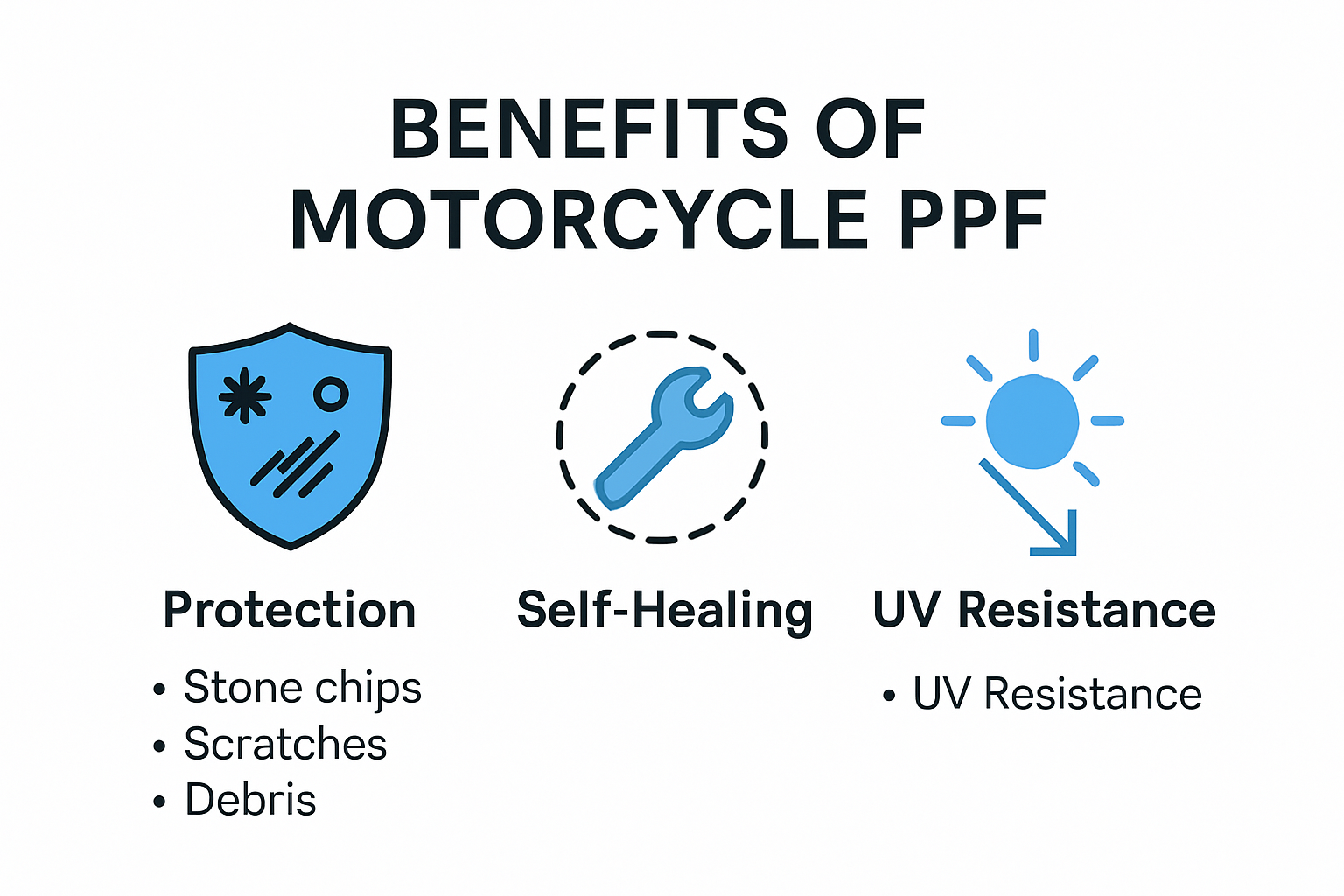
Benefits of PPF for Motorcycle Protection
Motorcycle paint protection film (PPF) represents a critical investment for riders seeking comprehensive paint preservation and aesthetic maintenance. Professional installers and detailers understand that PPF offers far more than cosmetic enhancement – it provides strategic defence against multiple environmental and physical threats.
Advanced Surface Protection Mechanisms
PPF technology delivers multilayered protection that goes beyond traditional waxing or ceramic coatings. The urethane-based film creates an invisible barrier that shields motorcycle paintwork from numerous potential damages. Carzspa research indicates that high-quality PPF can prevent up to 80% of environmental paint degradation.
The film’s composition allows it to absorb minor impacts and resist scratching, which is particularly valuable for motorcycles constantly exposed to road debris, insects, and atmospheric contaminants. Unlike traditional paint protection methods, PPF maintains paint integrity by distributing microscopic abrasions across its surface rather than directly impacting the motorcycle’s original paint layer.
Self-Healing and Longevity Benefits
One of the most revolutionary aspects of modern PPF is its self-healing properties. When exposed to moderate heat, the film’s molecular structure can automatically repair minor scratches and swirl marks. This means motorcycle owners can maintain a pristine appearance without constant professional detailing.
Automotive Quest highlights that premium PPF can extend a motorcycle’s paint lifespan by several years, effectively protecting the original finish from UV radiation, chemical stains, and mechanical abrasions. Professional installers recognise this as a significant value proposition for customers seeking long-term paint preservation.
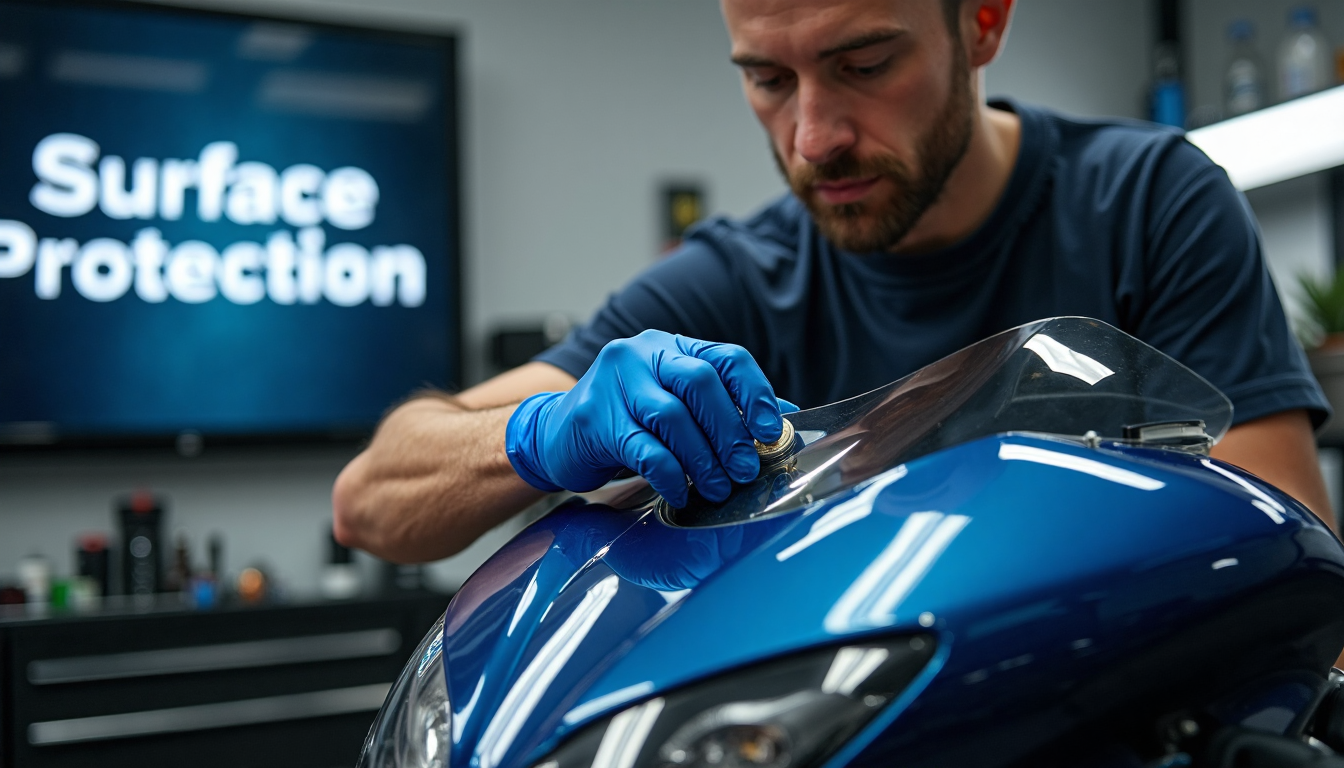
Economic and Aesthetic Preservation
Beyond protection, PPF offers substantial economic advantages. By preventing paint degradation, the film helps maintain a motorcycle’s resale value. Potential buyers appreciate well-maintained paintwork, and a vehicle protected by high-quality PPF signals meticulous ownership.
Professional detailers and installers should understand that PPF is not merely an aesthetic enhancement but a strategic investment. The film’s ability to preserve original paint reduces the need for expensive repainting or touch-up procedures. Moreover, modern PPF technologies offer near-invisible protection, ensuring the motorcycle’s original design and colour remain uncompromised.
Key considerations for motorcycle PPF installation include:
- Material Quality: Select films with proven durability and self-healing capabilities
- Professional Installation: Precise application ensures maximum protection
- Comprehensive Coverage: Focus on high-impact areas like fuel tanks, fairings, and front fenders
For professional installers and detailing businesses, understanding these nuanced benefits positions PPF as an essential service offering that delivers tangible value to motorcycle enthusiasts seeking comprehensive paint protection.
Key Features to Look for in Motorcycle PPF
Selecting the right paint protection film (PPF) for motorcycles requires a comprehensive understanding of advanced material characteristics and performance metrics. Professional installers and detailing experts must evaluate multiple critical features to ensure optimal protection and client satisfaction.
Advanced Material Composition and Durability
The fundamental quality of motorcycle PPF begins with its base material composition. Garware High Tech Films highlights that top-tier PPFs utilize elastomeric polymers designed to provide superior protection against environmental challenges. These advanced materials offer a unique combination of flexibility and resilience, enabling the film to absorb minor impacts without compromising its protective capabilities.
Professional installers should prioritize PPFs with thickness ranging between 6-10 mils, which provides substantial protection while maintaining sufficient transparency. The molecular structure of premium PPFs allows for exceptional elongation properties – typically between 300-500% – which means the film can stretch and conform to complex motorcycle surfaces without tearing or losing integrity.
Self-Healing and Environmental Resistance
Self-healing capabilities represent a revolutionary advancement in PPF technology. Automotive Protection Research indicates that modern PPFs can automatically repair minor scratches when exposed to moderate heat. This feature is particularly crucial for motorcycles, which face constant exposure to harsh environmental conditions.
Key environmental resistance properties include:
- UV Protection: Prevents paint fading and oxidation
- Chemical Resistance: Guards against acid rain, bird droppings, and industrial pollutants
- Temperature Stability: Maintains performance across wide temperature ranges
The hydrophobic nature of premium PPFs further enhances protection by creating a water-repellent surface. This characteristic not only makes cleaning easier but also reduces the potential for water-related paint damage during various riding conditions.
Performance and Installation Considerations
Beyond material properties, professional installers must evaluate PPF performance through specific technical metrics. Transparency, adhesive quality, and edge retention become critical factors in determining film effectiveness. Motorcycle Detailing Professionals recommend selecting films with minimal orange peel effect and superior optical clarity to maintain the motorcycle’s original aesthetic.
Installation complexity varies significantly between different motorcycle models and surface geometries. Professionals should seek PPFs offering:
- Pre-Cut Pattern Compatibility: Enables precise fitment
- Conformability: Ability to wrap around complex curves
- Long-Term Warranty: Indicates manufacturer confidence
For detailing businesses and professional installers, understanding these nuanced features transforms PPF from a simple protective layer into a sophisticated preservation solution. The right PPF not only protects a motorcycle’s paintwork but also enhances its long-term value and aesthetic appeal.
Professional Application Tips and Best Practices
Successful motorcycle paint protection film (PPF) installation demands precision, technical expertise, and meticulous attention to detail. Professional installers must master a complex set of skills to ensure optimal film performance and client satisfaction.
Surface Preparation and Cleaning Protocols
Before PPF application, comprehensive surface preparation becomes critical. Automotive Detailing Professionals emphasize that microscopic contaminants can compromise film adhesion and long-term performance. The preparation process requires systematic cleaning using specialized automotive-grade decontamination solutions.
Key preparation steps include:
- Chemical Degreasing: Remove all surface oils and residues
- Clay Bar Treatment: Eliminate embedded microscopic contaminants
- Isopropyl Alcohol Wipedown: Create an absolutely clean surface
Professional installers should invest in high-quality microfibre towels and lint-free cleaning materials to prevent introducing additional surface imperfections during the preparation phase. Temperature and humidity control during cleaning are equally crucial – ideal conditions range between 20-25 degrees Celsius with humidity below 50%.
To help visualise the surface preparation process, the table below outlines key steps and their purposes:
| Step | Purpose |
|---|---|
| Chemical Degreasing | Remove all surface oils and residues |
| Clay Bar Treatment | Eliminate embedded microscopic contaminants |
| Isopropyl Alcohol Wipedown | Create an absolutely clean surface |
| Use Microfibre Towels | Prevent introducing new imperfections |
| Control Temp/Humidity | Ensure optimal adhesion |
Precision Installation Techniques
Professional Motorcycle Detailing Association recommends utilizing professional-grade installation tools to achieve seamless PPF application. Specialized squeegees with soft edges and precise temperature-controlled heat guns enable installers to conform the film perfectly to complex motorcycle surfaces.
Advanced installation techniques involve:
- Wet Application Method: Using slip solutions for precise film positioning
- Tension Management: Controlling film stretch without causing distortion
- Edge Sealing: Preventing potential lifting and maintaining film integrity
Professionals must understand each motorcycle model’s unique surface geometry. Curved surfaces like fuel tanks and fairings require different application techniques compared to flatter areas. Expertise in reading surface contours and managing film tension distinguishes exceptional installers.
Post-Installation Care and Quality Assurance
After PPF installation, a comprehensive quality assurance process becomes essential. Installers should conduct detailed visual inspections under multiple lighting conditions to verify proper adhesion, edge alignment, and absence of imperfections.
Recommended post-installation protocols include:
- 48-Hour Curing Period: Avoid washing or significant environmental exposure
- Initial Inspection Documentation: Photograph and record installation details
- Client Education: Provide specific maintenance instructions
Professional installers must communicate realistic expectations regarding PPF performance. While high-quality films offer significant protection, they are not completely impervious to damage. Transparent communication about film capabilities helps manage client expectations and builds long-term trust.
By mastering these advanced application techniques, professional detailers transform PPF installation from a basic service into a sophisticated preservation solution for motorcycle enthusiasts.
Managing Customer Expectations and Aftercare Advice
Effective customer communication and comprehensive aftercare guidance are pivotal in motorcycle paint protection film (PPF) services. Professional installers must establish clear expectations to ensure client satisfaction and long-term film performance.
Initial Post-Installation Care Protocol
Auto FX Professional Detailing emphasizes the critical first 48-72 hours following PPF installation as a crucial period for film stabilization. During this timeframe, customers must understand specific care requirements to prevent potential damage or performance compromise.
Key initial care recommendations include:
- Avoid Washing: Refrain from washing the motorcycle for the first 48-72 hours
- Minimize Touching: Prevent direct contact with the film surface
- Temperature Considerations: Keep the motorcycle in a controlled environment
Professional installers should provide clients with a detailed written aftercare guide, clearly explaining the reasons behind these initial restrictions. This proactive approach demonstrates expertise and builds client trust by transparently communicating the film’s delicate early-stage bonding process.
The following table summarises initial and ongoing aftercare recommendations to guide both installers and clients:
| Care Stage | Recommendation | Purpose |
|---|---|---|
| Initial | Avoid Washing (48-72 hours) | Allow film to properly cure |
| Initial | Minimise Touching | Prevent disruption of adhesion |
| Initial | Control Temperature | Support stable bonding |
| Long-Term | Use pH-neutral Automotive Shampoos | Preserve film integrity |
| Long-Term | Use Soft Microfibre Mitts | Reduce risk of scratching |
| Long-Term | Avoid High-Pressure Washing near Edges | Prevent film lifting |
Long-Term Maintenance and Cleaning Strategies
Elite Detailing Professionals recommend specific maintenance techniques to preserve PPF integrity. Clients must understand that proper care extends beyond initial installation and requires consistent, gentle maintenance.
Comprehensive maintenance guidelines involve:
- Washing Technique: Use pH-neutral automotive shampoos
- Cleaning Tools: Employ soft microfibre mitts and clean wash media
- Avoid High-Pressure Washing: Minimize direct pressure near film edges
Professionals should educate customers about potential risks such as using inappropriate cleaning chemicals or aggressive washing techniques that could compromise the film’s protective properties. Demonstrating proper cleaning methods during the installation appointment can significantly improve long-term client satisfaction.
Managing Performance Expectations and Warranty Understanding
Invisi Film Protection Systems highlight the importance of transparent communication regarding PPF capabilities and limitations. Customers must understand that while high-quality PPF offers exceptional protection, it is not completely impervious to all potential damages.
Critical expectation management aspects include:
- Self-Healing Limitations: Explain the extent of minor scratch self-repair capabilities
- Warranty Terms: Clearly outline specific coverage conditions
- Realistic Protection Boundaries: Discuss what PPF can and cannot prevent
Professional installers should provide comprehensive documentation detailing the film’s performance characteristics, including expected lifespan, potential maintenance requirements, and warranty specifics. This approach prevents misunderstandings and establishes a foundation of trust and transparency.
By implementing these strategic communication and aftercare guidance practices, motorcycle PPF professionals can differentiate themselves in a competitive market. The key lies in transforming a technical service into an educational experience that empowers customers to maintain their motorcycle’s aesthetic and protecti


